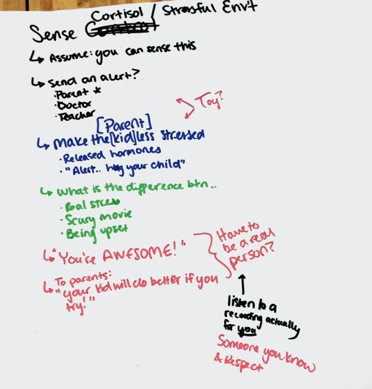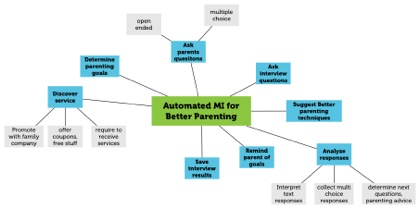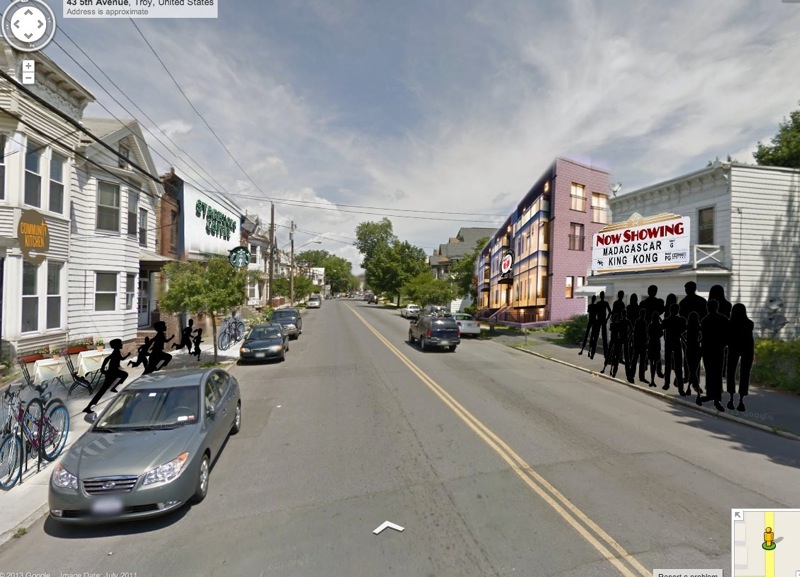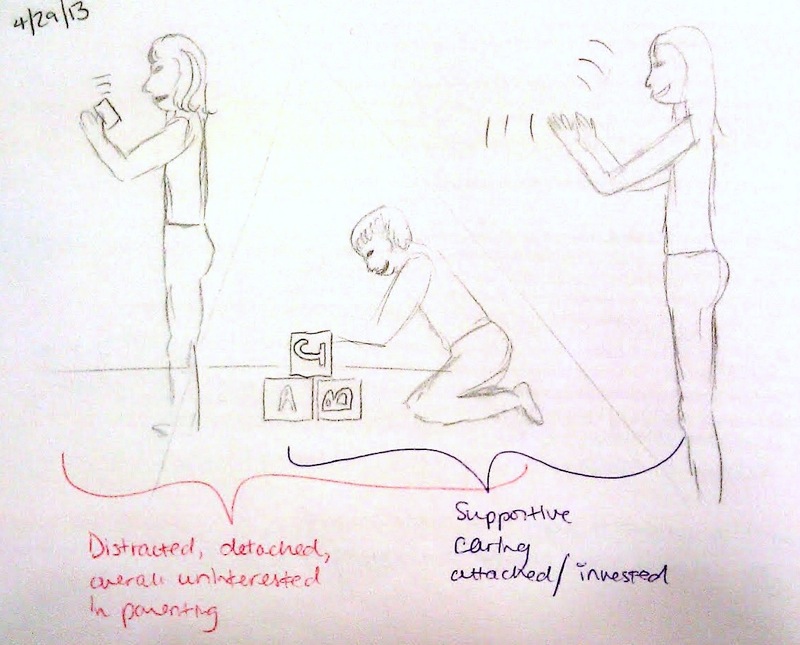In working on this project we pursued countless topics and concepts—diverging, converging and diverging along the way—and finally converged on the concepts presented here. The following is a snapshot of the path we took to get here.
In the beginning of the semester, we were working separately on similar problem areas (often homelessness) and would collaborate often to share ideas, research, and give feedback. Over time we recognized that our common goal in helping people to escape poverty would likely have the most impact if we were also working together to reach a common project.
Tracy Nietzel, Director of Joseph's House in Troy, gave us insight into the process of becoming homeless and the social services available for the poor and homeless.
Debby Maddis, Director of Housing and Special Initiatives at OPCC in Santa Monica, CA, talked about the experience of being homeless, and how people get out of homelessness.These mind maps helped work out the issues surrounding parenting and possible ways to reduce child stress.



Click on each image for a larger view


To help us look at problems with a more empathetic approach, we wrote as if we were the object.
Be the battery • Be the pacifier
As part of his process, Aaron developed a vision for the currently very poor North Central neighborhood in Troy. We see a future where RPI has a stake there, there are multiple community centers for kids to hang out at, and a Starbucks! This pompted him to wonder, “Why hasn’t this happened? Why do those who grow up in poverty stay in poverty? Why is this issue so difficult? What could we address that would be more than just a Band-Aid?"



Cary's sketch above displays the vision of the past paradigm (left backet, parent uninterested in their child) compared with the same parent supporting their child in the future.
In comparing our two final concepts, we determined that it would be best to continue with our Motivational Interviewing concept because of it's scalability and potential to build positive parenting relationships.
Criteria | Scoring- 0 to 5 5 is highest | Stress Monitoring with Pacifier | Motivational Interviewing and Parents | Versus Ecovative Design | Comments |
For the User- Benefits to many people | Life changing=5 Strong=4 Good=2 Little=0 | 3 | 5 | 5 | SM: positive reinforcement to parents, but cost may limit customers MI: free and accessible to all, self management empowers users |
Benefits to planet
| Breakthrough=5 Strong=4,Good=2 Little=0 | 1 | 5 | 5 | SM: helps some families recognise stress MI: could help develop generations of good parents and then good kids! |
Potential for Change, Patents, Innovation | Significantly changes the present method =5 Similar to present=0 | 3 | 4 | 5 | SM: parents previously had no record of their kids’ stress besides crying MI: applying two known techniques in a completely new setting |
Audacious! Aims for IDEAL | WOW=5 good=2 commodity=0 | 2 | 5 | 5 | MI: could create a parent who cares and prevent children from following the wrong path |
Cost vs. Benefit to people and planet | 3x benefit for same $=5, same $/Benefit=0 | 1 | 5 | 5 | SM: will be expensive for comparatively little benefit MI: free to user! |
Time to make it a reality | Prototype 3 mos=5 1 year=4 4 years= 1 | 3 | 3 | 5 | SI: prototype of new technology required MI: requires a lot of research and interviews |
Potential to Learn new material | Much=5 Some=3 None=0 | 5 | 5 | 5
| Both technologies have a lot of potential development |
Potential for family of products | Will lead to other=5 Just one embodiment=0 | 5 | 5 | 5
| SI: would lead to bracelets and stress indicators for other customers MI: if online MI becomes successful for parenting it could be applied to countless other users |
Potential for funding | Matches goals of funding groups= 5 Unlikely to fund = 1 | 4 | 5 | 5 | SI: parenting and health care groups MI: psychological organizations |
Potential for significant “impact” and sales | Disruptive =5 Only slightly “better” =0 | 2 | 5 | 5 | MI: costs user only their time |
Multiple Benefits, | 3+=5 1=0 | 3 | 5 | 5 | SI: reassures parent and encourages action to soothe child MI: ultimately leads to a society where people are better to people |
Total | 32 | 52 | 55 |